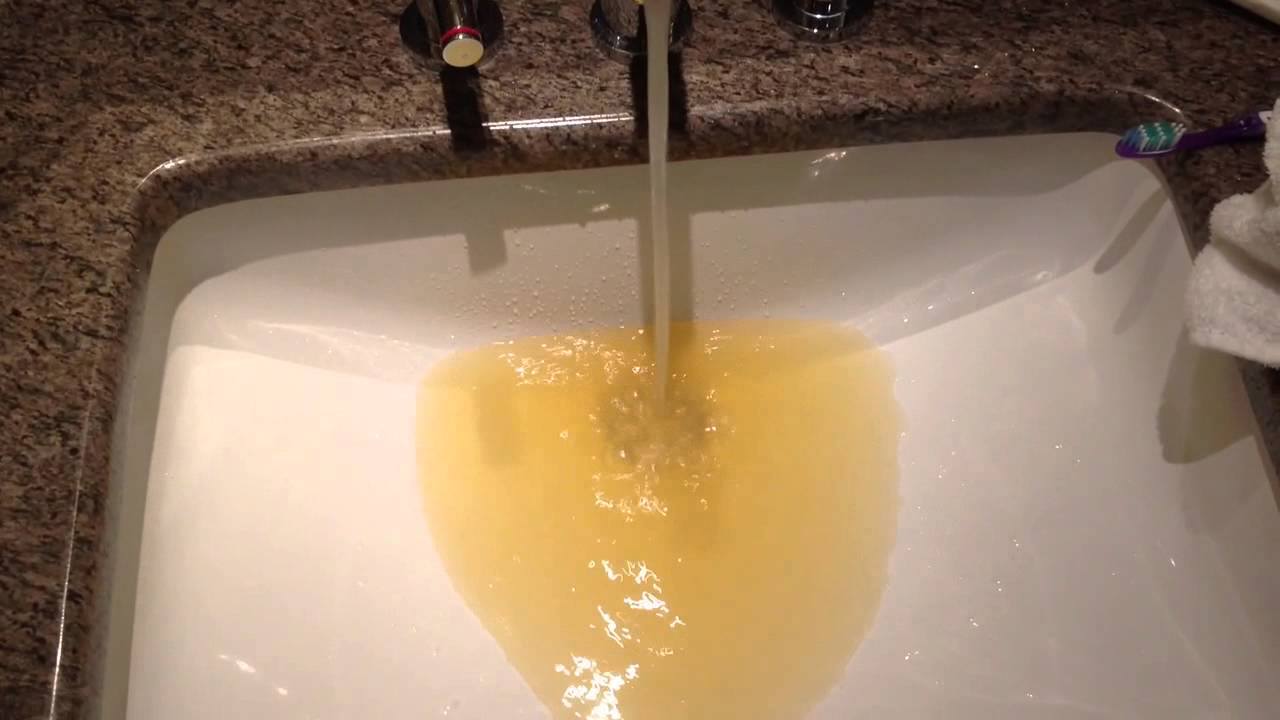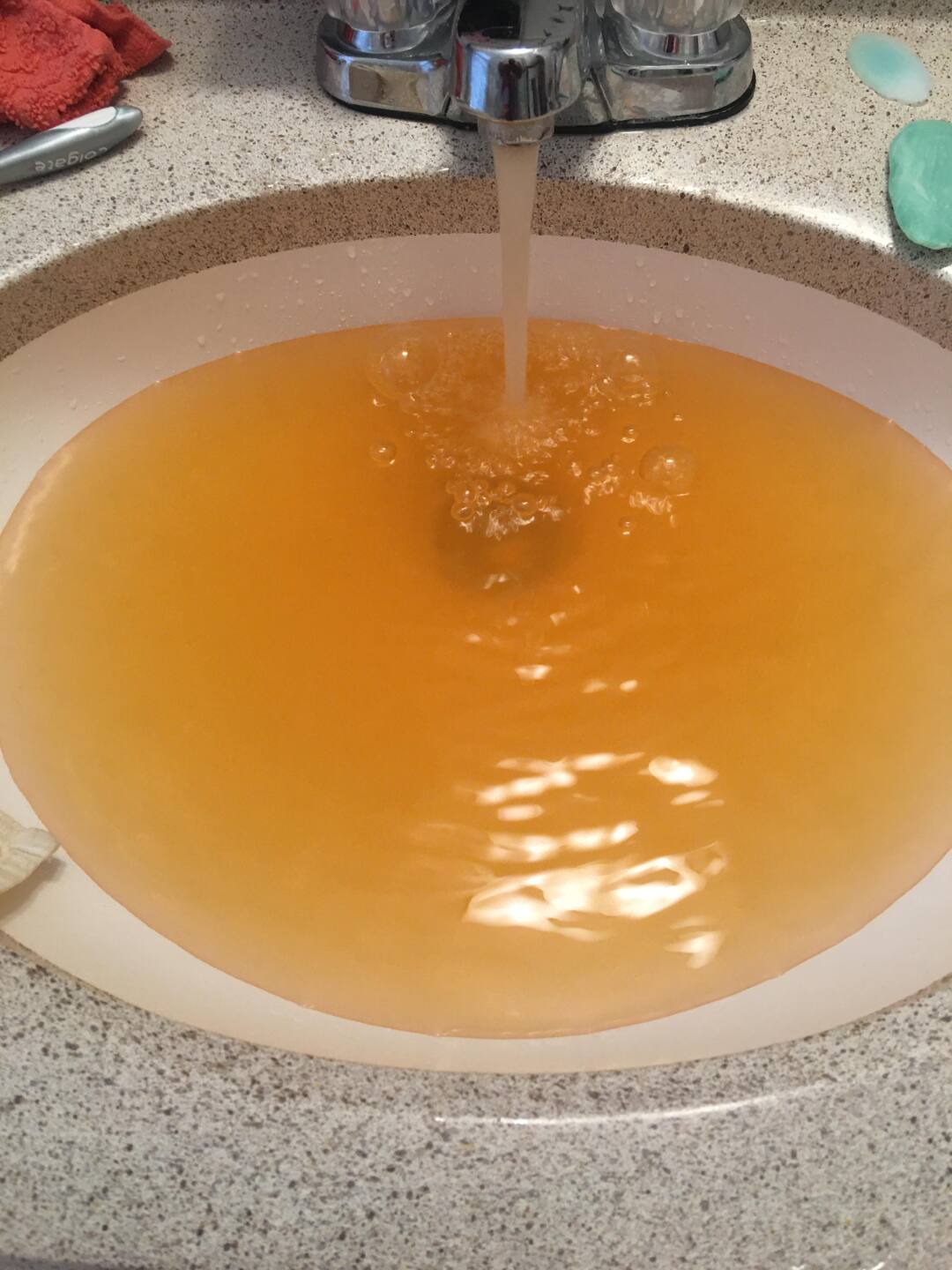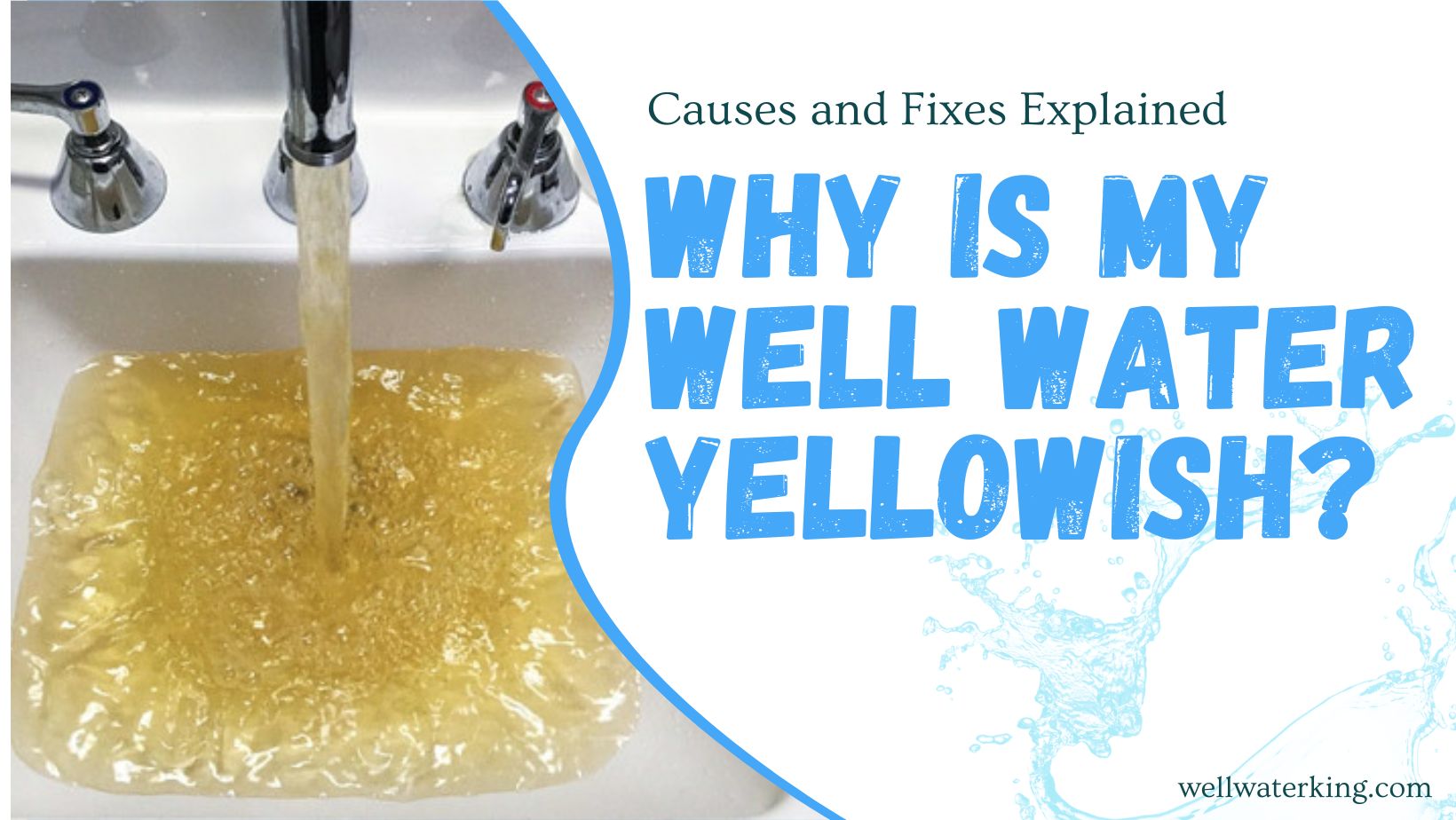Have you ever eagerly turned on your faucet, expecting a clear stream of water, only to be met with an unappetizing orange flow? You’re not alone – and your well isn’t producing fruit punch! Orange well water is a concern many homeowners face, often raising eyebrows and leading to a frantic search for answers. Why does this happen, and is it safe? These are some of the pressing questions we’ll dive into today.
What Causes Orange Well Water?
Our relationship with water is an intimate one. We drink it, cook with it, bathe in it, and often take its clarity and purity for granted. But when the water starts resembling the color of a sunset, it’s hard not to be taken aback. In this post, we’ll uncover the reasons behind the discolored appearance, from rusty pipes to sneaky minerals lurking unseen. So, whether you’re a curious homeowner or just a water enthusiast, read on. Let’s turn the tide on this orange mystery together!
Popular reasons why well water may have an orange color

- Iron Build-up: Iron is the most common cause of yellow or orange well water, especially if the water tastes metallic. Iron builds up in well groundwater supplies together with manganese. Exposed to oxygen, ferrous iron will react and turn water yellow or orange. Iron concentrations above 0.3 ppm can cause orange staining. Iron, in the form of orange sediment, will settle at the bottom of a glass of water left out overnight. Iron leaves yellow-orange stains on your fixtures, while manganese can leave behind black staining or sludge
- Corrosion of well components: Over time, metal components of the well like pipes, fittings, or the pump itself can corrode, releasing oxidized iron and causing an orange tone. Corrosion of old water pipes can also be the reason behind orange-colored well water
- Tannins: Water with high tannin content often comes out of the tap with a yellow or tea-like color, which can also appear orange
- Forever Chemicals: In some cases, well water can be contaminated with “forever chemicals,” which are concentrated largely in Los Angeles, Orange, and Riverside counties in California
- Algae growth: Certain algae species produce orange, yellow, or brown pigments. If algae grows inside or near a well, it can impact water color.
- Contamination: Well water can become contaminated with germs and chemicals from flooding, extreme weather, runoff, and natural changes in the water that serves the well.
- Drilling fluid contamination: During well installation, drilling fluid containing rust-colored bentonite clay may infiltrate the aquifer if the borehole isn’t properly sealed.
- Naturally occurring organic matter: Decaying leaves, plants, and organic debris can release humic acids that tint water orange. This often occurs more in surface water sources.
- Iron Bacteria: These bacteria feed on iron in water and produce a reddish-brown slime that can tint the water orange.
- Water Source Contamination: Nearby activities, like construction or mining, can introduce contaminants that change the water’s color.
- Changes in pH: Drastic changes in water pH can cause minerals to precipitate out of the water, leading to discoloration.
It is important to test well water at least once a year for bacteria and other contaminants to ensure that it is safe for drinking, preparing food, and all household uses!
The Impact of Orange Well Water
While orange well water might give your home a spooky, Halloween-like ambiance when you fill up the bathtub, its effects are far from festive. The unexpected discoloration in your well water might be more than just an aesthetic issue. Here’s a breakdown of its various impacts:
1. Aesthetic Concerns:
- Staining: That unmistakable orange hue isn’t just limited to the water. Over time, consistent use of orange well water can lead to stubborn stains on your sinks, tubs, toilets, and even laundry. Porcelain fixtures, white clothing, and linens are especially susceptible.
- Unpleasant Appearance: While it might seem superficial, the look of the water can be off-putting. A refreshing glass of water that looks more like juice is not exactly appetizing.
2. Taste and Odor Disturbances:
- Metallic Taste: A high concentration of minerals, especially iron, can give water a distinctive metallic taste, making it less than ideal for cooking or drinking.
- Unpleasant Odor: In cases where iron bacteria are the culprits, the water might have a “swampy” or “earthy” smell, which can be quite strong and uninviting.
3. Hair and Skin Effects:
- Hair Discoloration: People with lighter hair tones might find that their hair takes on an orange or reddish tinge after washing. This is especially true for those who have blonde or gray hair.
- Skin Irritation: While not common, some people might experience slight skin irritations or dryness due to the minerals in the water.
4. Health Implications:
- Generally Safe but… High iron content, in most cases, doesn’t pose direct health risks. Iron is, after all, a necessary mineral for our bodies. However, it’s the other potential contaminants, like bacteria or other substances that might come along with the discoloration, that can be a cause for concern.
- Digestive Disturbances: In rare cases, if the iron content is extremely high, it might lead to digestive issues for some individuals.
5. Plumbing and Appliance Wear:
- Pipe Clogging: The particles causing the discoloration can settle and build up in pipes, leading to clogs or reduced water flow.
- Appliance Lifespan: Water heaters, washing machines, and dishwashers might have reduced efficiency and lifespan when consistently processing hard or iron-rich water.
Treating Orange Well Water

Orange-tinted water isn’t just displeasing to the eye; it can also pose challenges in daily usage and health. Thankfully, various treatments can address and remedy this issue. Let’s delve into the available options:
- Identify the cause: The first step is to get your water tested to determine what is causing the orange color. A lab can check for iron, manganese, organic compounds, and other potential contaminants. This will tell you how to properly treat it.
- Replace Old Pipes: If the orange color is due to aged iron pipes and corroded iron fixtures, replace the pipes running from the well.
- Install an iron/manganese oxidizing filter: This uses a compressed air injection system or chemical oxidation to convert dissolved forms of iron and manganese into solid particles that can then be filtered out.
- Use an iron removal system: For iron concentrations above 0.3 ppm, you’ll need an iron filter which uses oxidizing agents or ion exchange to remove soluble iron. Common types are manganese greensand filters, catalytic media filters, or ion exchange resins.
- Sediment Filters: Use a sub-micron rated sediment filter to remove the iron precipitate that has emerged from the water.
- Water Softener: A standard water softener can remove the iron, but it may not be the best solution if you don’t want to drink softened water or have its salty backwash pumped into your yard.
- Activated carbon filter: Carbon filters are effective at removing organic compounds like tannins, dyes, or algae toxins that can discolor water. They absorb these contaminants as water passes through.
- Shock chlorination: For bacterial growth or buildup of organic matter, shocking the well with chlorine can help remove the orange tint by oxidizing and flushing out the well system. The standard shock dose is 1-2 cups household bleach per 100 gallons of water in the well.
- Proper maintenance and replacement of filters: is crucial for a well water treatment system to keep working effectively. Testing water frequently helps monitor if discoloration returns.
- Keep the Well Clean: Keep drill bits, pumps, and lengths of casing pipe clean and off the ground. Only place disinfected water in a well for drilling, repair, or priming pumps. Never use water taken from surface sources like lakes, rivers, streams, or ponds. Ensure the well casing is capped, watertight, and extends at least one foot above the ground.
- Disinfect the Well: Disinfect the well, pump, and plumbing after repairs.
In Conclusion: Understanding and Addressing Orange Well Water
Water, often dubbed the elixir of life, holds paramount importance in our daily routines. From drinking to cooking, and cleaning, it’s at the heart of our homes. However, the sudden appearance of orange or brown hues in well water can be both alarming and inconvenient.
As we’ve explored, this discoloration can arise from various sources, be it rusting infrastructure, natural minerals like iron and manganese, organic tannins, or even bacterial activities. Each source poses its unique challenges, and the implications of orange well water span from mere aesthetic concerns to genuine health worries. Stained laundry, off-putting tastes and odors, and potential skin and hair effects underscore the urgency of addressing this issue.
With the right treatment approach, orange well water can be cleared up for clean, pleasant-tasting water. While it may require an initial investment, properly treating discolored well water is worthwhile for improving the water supply’s safety and aesthetics. With some effort to remove the orange tint, well owners can enjoy access to fresh groundwater for their homes long into the future.
In closing, if you ever encounter orange well water, remember: it’s a solvable issue. Regular testing, maintenance, and, if needed, professional consultation can ensure that your home’s water remains crystal clear, safe, and refreshing. After all, clean water is not just about quenching thirst; it’s about safeguarding health and ensuring quality living.





